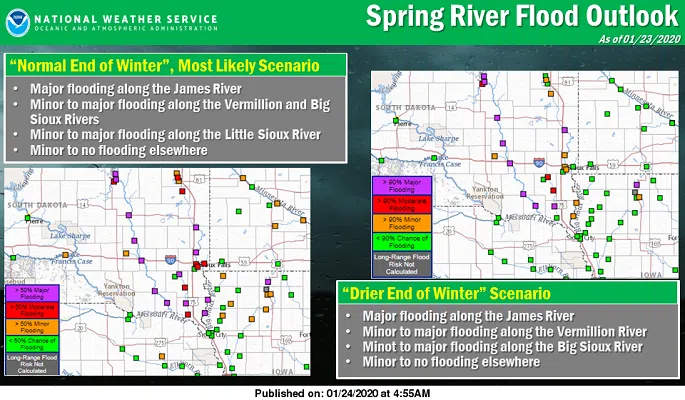Flooding is the nation’s most common natural disaster. Flooding can happen in every U.S. state and territory. However, all floods are not alike. Some can develop slowly during an extended period of rain, or in a warming trend following a heavy snow. Others, such as flash floods, can occur quickly, even without any visible signs of rain. Be prepared for flooding no matter where you live, but particularly if you are in a low-lying area, near water or downstream from a dam. Even a very small stream or dry creek bed can overflow and create flooding.
The following is a checklist of items for you to complete to be flood prepared and safe:
- Know the types of flood risk in your area. Visit FEMA’s Flood Map Service Center to determine if your home is in a flood zone, https://msc.fema.gov/portal/home.
- Flooding can occur anywhere, even if not located in a flood zone. Purchase or renew a flood insurance policy. It takes 30 days for a policy to go into effect and can protect the life you have built. Homeowner’s policies do not cover flooding. Talk to your insurance provider to get flood coverage under the National Flood Insurance Program (NFIP).
- Some communities have a community warning system. Sign up for alerts, https://public.alertsense.com/SignUp/.
- Download a weather app on your smartphone to give you alerts on impending weather. The “Emergency” app from the Red Cross allows you to customize your alert settings.
- Purchase a weather radio. The Emergency Alert System (EAS) and National Oceanic and Atmospheric Administration (NOAA) Weather Radio provide emergency alerts.
- If flash flooding is a risk in your location, then monitor potential signs, such as heavy rain.
- Learn and practice evacuation routes, shelter plans, and meet up location for a flash flood response. Ask someone out of state to be your “family contact” in an emergency and make sure all family members know the contacts address and phone number.
- Make sure basements are waterproofed and your sump pump is working. Then, install a battery-operated backup in case of power failure.
- Installing a water alarm will also let you know if water is accumulating in your basement.
- Elevate the furnace, water heater, and electric panel in your home if you live in an area that has a high flood risk.
- Clear debris from gutters and downspouts to ensure water flows away from the foundation.
- Install check valves in floor drains. Unbolt toilets from the floor and plug the drain pipe. Plug shower drains and washing machine drains to prevent backup.
- Anchor any fuel or propane tanks.
- If feasible, construct barriers to stop floodwater from entering the building and seal walls in basements with waterproofing compounds.
- Move furniture and valuables to a safe place or higher levels in your home.
- Store copies of irreplaceable documents (such as birth certificates, passports, etc.) in a safe, dry place and waterproof container. Create password-protected digital copies. Keep originals in a safe deposit box.
- Build an emergency supply kit. Food, bottled water, first aid supplies, medicines and a battery-operated radio should be ready to go when you are. Visit https://www.ready.gov/ for a complete disaster supply checklist. Keep in mind each person’s specific needs, including medication.
- Don’t forget the needs of pets. Many shelters do not accept pets, so make plans now on what to do with your pets if you have to evacuate your residence.
- Obtain extra batteries and charging devices for phones and other critical equipment.
- During a flooding event, do not walk through moving water, if possible. Look for areas where the water is not moving. What might seem like a small amount of moving water can easily knock you down.
- During a flood, do not drive into flooded areas. If your vehicle becomes surrounded by rising water, get out quickly and move to higher ground, if possible.
- During a flood, stay away from downed power lines to avoid the risk of electric shock or electrocution.
- After a flood, do not return to your home until local authorities say it is safe. Even after flood waters recede, roads may be weakened and could collapse. Buildings may be unstable and drinking water may be contaminated.
Additional resources:
https://dps.sd.gov/emergency-services/emergency-management
www.twitter.com/sdpublicsafety







